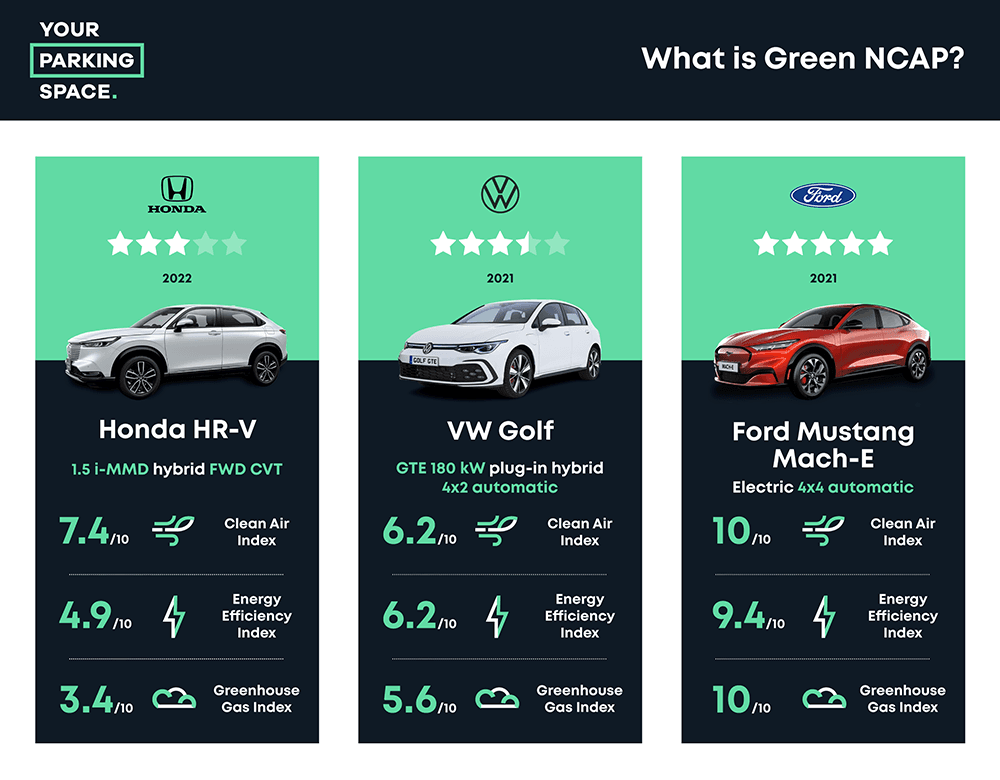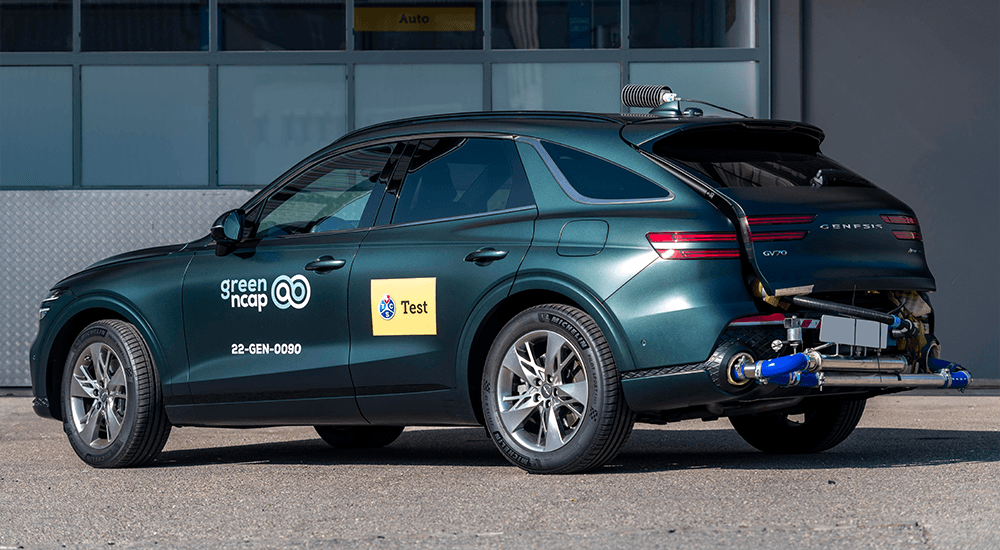With ever increasing focus on climate change and the environment, the transport industry is under the spotlight. Cars in particular are often criticised as creating high levels of pollution, particularly because of the sheer number on the road.
But other than the official CO2 emissions rated at a vehicle’s launch, there is very little to be able to compare how much impact one car has on the environment compared to another. This is where Green NCAP comes in.
Green NCAP is an independent testing programme for vehicles, to determine how “green” they are. In essence, it aims to allow potential car buyers the chance to compare one car’s environmental impact against its rivals.
Like the similarly named Euro NCAP safety rating, which is far more part of the public consciousness than recently launched Green NCAP, the latter uses a star-based system to give an instantly comparable rating to a car.
What does Green NCAP look at?

As a base-line, Green NCAP is able to look at the official manufacturer’s emissions, but it goes much further than that. The organisation also tests vehicles using its own equipment, and both in a laboratory and on the road. This gives Green NCAP far more accurate data to work with when considering real-world environmental impact. Green NCAP sources its own cars too, so as to minimise any chance of cars being “fettled” to get through the tests.
In the laboratory, the vehicle is put onto a dynamometer - a rolling road - and driven through a series of scenarios with resistance able to simulate different situations.
While the car is on the rolling road, exhaust gases are analysed to gather information on what is being produced and how many of them. These are based on the industry’s WLTP (World-harmonised Light-Vehicles Test Cycle) standards, but Green NCAP has made them more realistic.
Out on the open road, GreenNCAP uses a vehicle-fitted emissions system to record what is produced when driven. Again, this is based on a standardised industry test programme - RDE (Real Driving Emissions) - which uses a set route with a mixture of urban routes, open roads, and main trunk roads to mimic a typical journey. Once again, Green NCAP has made the tests stricter and more accurate.
What do Green NCAP ratings mean?

Once the emissions have been analysed, Green NCAP gives the vehicle a star rating - the highest level and simplest way to view the results. These summarise how a vehicle has performed in Clean Air, Energy Efficiency, and Greenhouse Gas emissions.
The same star rating system is used no matter what powertrain is used. For plug-in hybrids - effectively part electric car, part petrol or diesel, the test includes two parts; when driven primarily using the engine - charge hold - and when the battery is fully charged and in charge depleting mode, effectively on electric power. These results are then combined in a way that would reflect how a car would be driven in reality.
Initially, all three emissions indexes were given an equal rating, reflecting the impact on public health (emissions) spending (efficiency), and climate (greenhouse gases).
As of this year (2022), Green NCAP uses a two-step process which sees cars that have performed well in the standard tests in the first stage, are then given more robust tests in the second stage. The principle is to allow high-scoring vehicles in the first section to “prove the stability of their performance under more difficult conditions and benefits models with a good and balanced overall performance”.
According to Green NCAP’s definitions, the results are:
5 stars: Overall excellent performance, showing very low fuel or energy consumption and at the same time emitting low pollutants and greenhouse gases. Well-equipped with emission abatement and fuel or energy saving technology.
4 stars: Overall good environmental performance; equipped with good and robust emission abatement and fuel saving technology.
3 stars: Average to good overall performance but equipped with regular emission abatement and fuel or energy saving technology fitted.
2 stars: Nominal overall environmental performance lacking some emission abatement and/or fuel or energy saving technology with room for improvement.
1 star: Marginal environmental performance showing that pollutant control and/or energy efficiency is compromised. The environmental performance design mix constituted by minimising pollutants, greenhouse gasses and fuel & energy consumption leaves considerable room for system design improvements.
0 stars: Overall environmental performance just meeting the minimum regulatory standards, possibly outdated emission abatement and fuel saving technology.
These are displayed in an initial star rating, showing the make, model, and fuel type. There is also an in-depth data sheet published that gives much greater insight into how the vehicle has perfomed.
What else is assessed?
 Life Cycle Assessment (LCA) is the latest set of tests and analysis to be carried out by Green NCAP, which look at a car in the context of its whole life cycle. Also referred to as “cradle to grave” this includes the impact a vehicle has on the environment and air pollution during manufacture, distribution, materials production, use, and finally its recycling or disposal.
Life Cycle Assessment (LCA) is the latest set of tests and analysis to be carried out by Green NCAP, which look at a car in the context of its whole life cycle. Also referred to as “cradle to grave” this includes the impact a vehicle has on the environment and air pollution during manufacture, distribution, materials production, use, and finally its recycling or disposal.
What is crucial to understand here is that this assessment does not solely rely on the attributes of the caritself. For example, the same car could be made in different countries, and one version would be worse in terms of LCA costs than the other. That might be because of shipping raw materials or the produced vehicle itself, energy production in various nations, or the renewable electricity mix for an electric car when being recharged for example.
Despite this being less precise than direct emissions testing of vehicles, it is widely accepted that these factors must be considered when truly judging a vehicles impact on health and the environment.
This will develop and improve over time, and will present a truer picture for consumers. For example, anelectric vehicle gets very high scores in the general Green NCAP results, but as a car rolls off the production line, it has “consumed” greater levels of emissions than a comparable petrol or diesel model. As it’s driven, the EV soon makes back this deficit, but this needs to be factored in for a clear picture.








